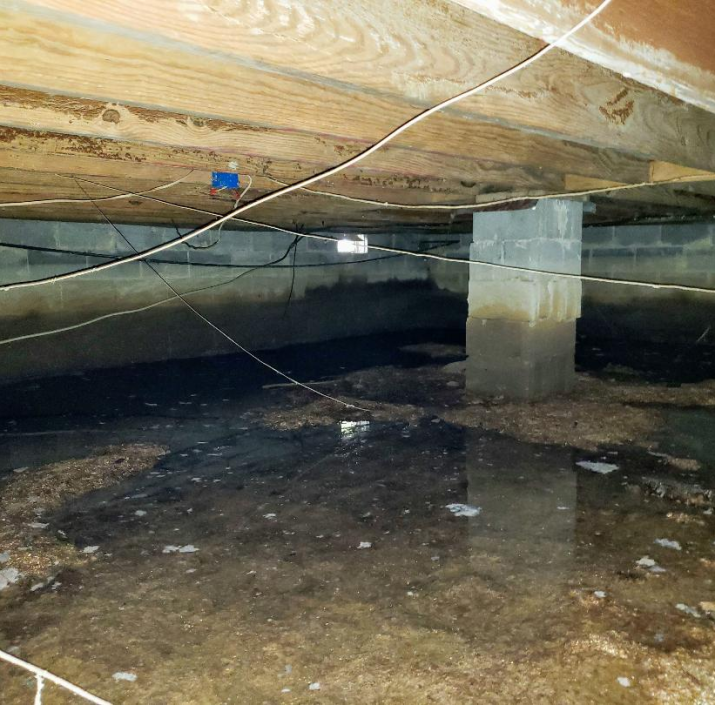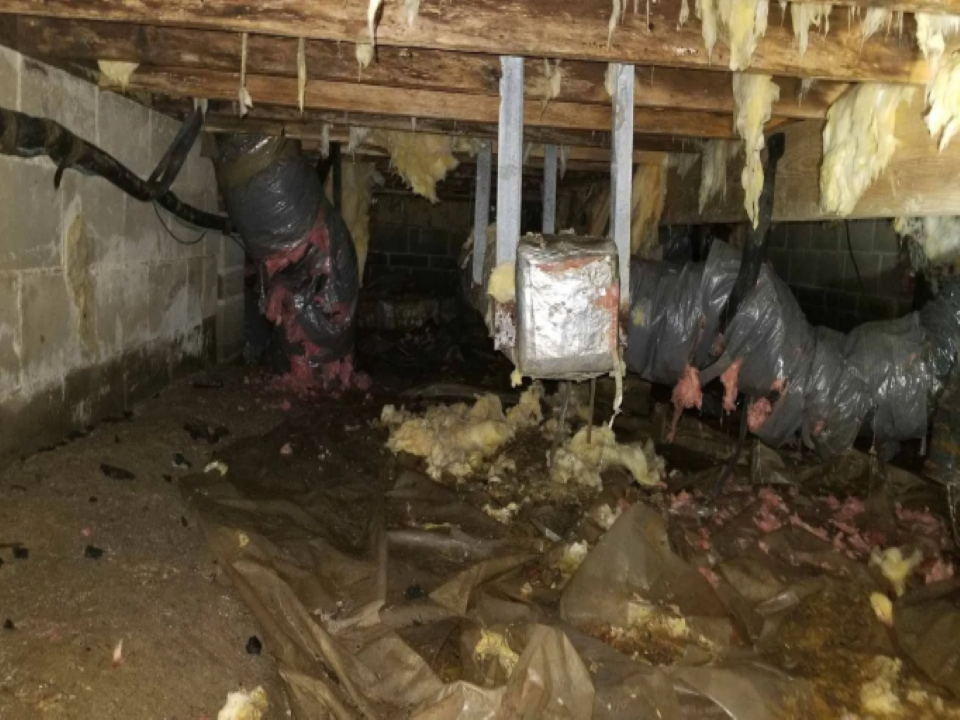Crawlspace Moisture
There are several ways water may get into a crawlspace. However, water in a crawlspace is never a good thing. It is important that the problem be found and addressed immediately. Crawlspaces are usually harder to access and a place where occupants don’t usually go. Because of this, crawlspaces are often neglected and forgotten about. Water in a crawlspace can cause rot to the joist and beams. Water can cause mold, mildew and other hazardous problems. A good clean, dry crawlspace can lead to a healthy home and good indoor air quality.


Water in a Crawlspace
The source of the moisture or water in the crawlspace may be contributed by one or many different factors. Water can enter the crawlspace if the grading around your home is pitched in a way that allows water to flow towards the home. Typically water may find its way inside the crawlspace through any cracks or gaps in the foundation. Depending on the climate that you live in, sometimes water getting in the crawlspace is inevitable. To counter act this, a sump pump is installed to keep the water out of the crawlspace. If the pump is broken, power is interrupted or pipe is disconnected then water may be have a means to be removed from the crawlspace allowing water to accumulate.
Gutter and Down Spouts
Plumbing Leaks
Sump Pump
Repair Any Foundation Cracks
Create a Dry, Healthy Crawlspace
In more recent studies building scientists have decided that crawlspaces today, should be sealed and insulated. In addition, a quality vapor barrier should be installed to keep control of the moisture. Sealing the crawlspace will limit the need to figure out whether vents should be open or closed and when. It limits air from entering the crawlspace and condensing on different surfaces. It keeps water from entering the crawlspace and potentially creating mold and other harmful hazards.
Remember the air in the crawlspace naturally rises into the home. This is the air we breath as occupants. The attempt for good indoor air quality starts with clean non hazardous air in the crawlspace.

